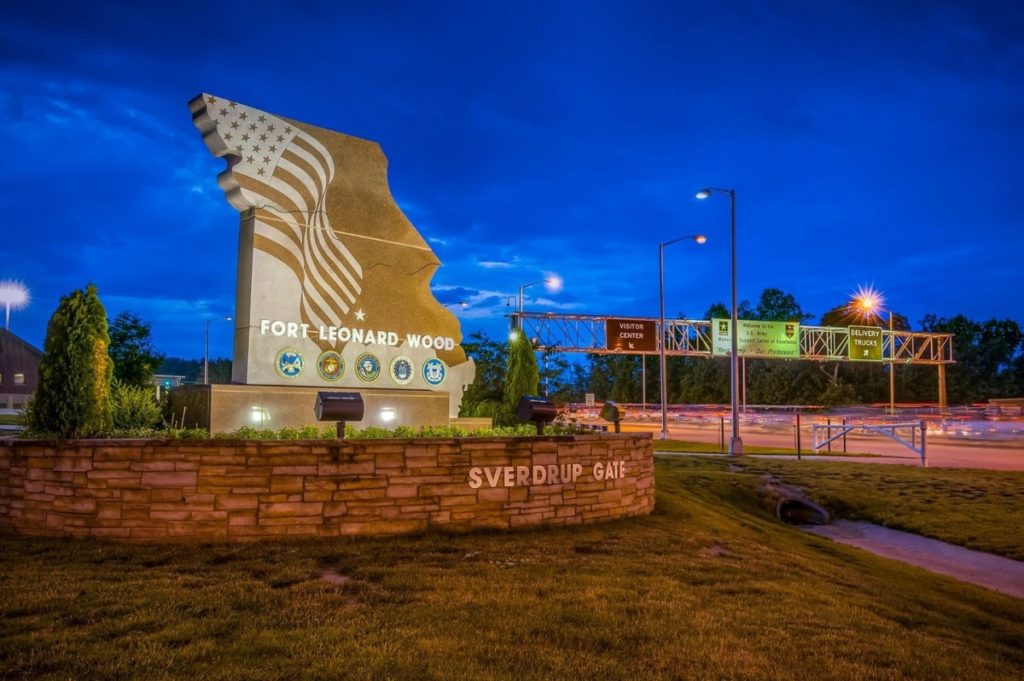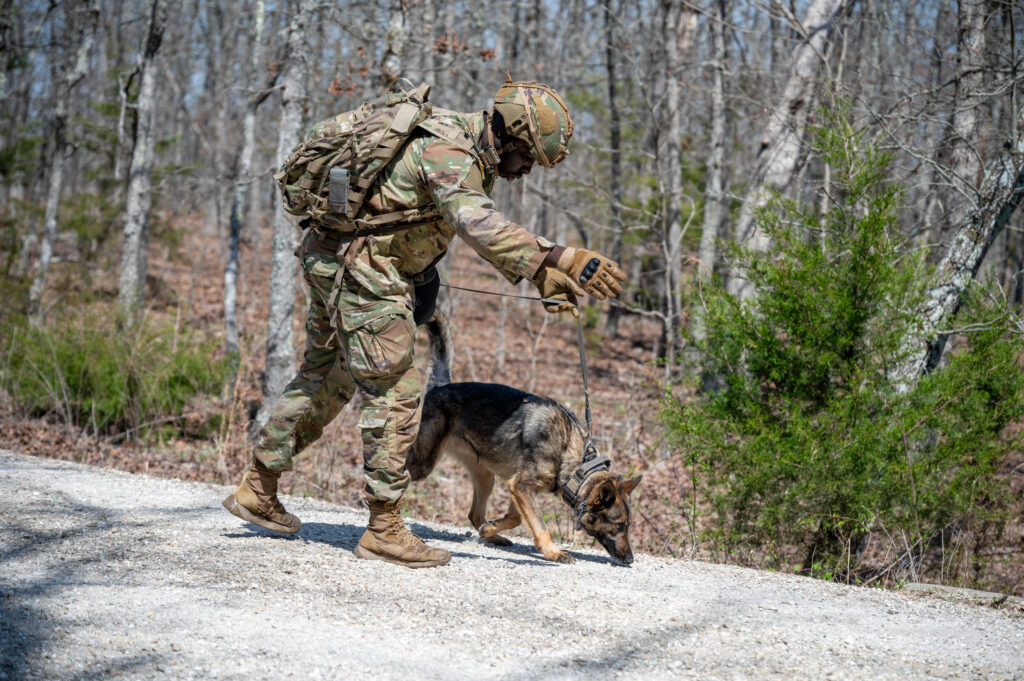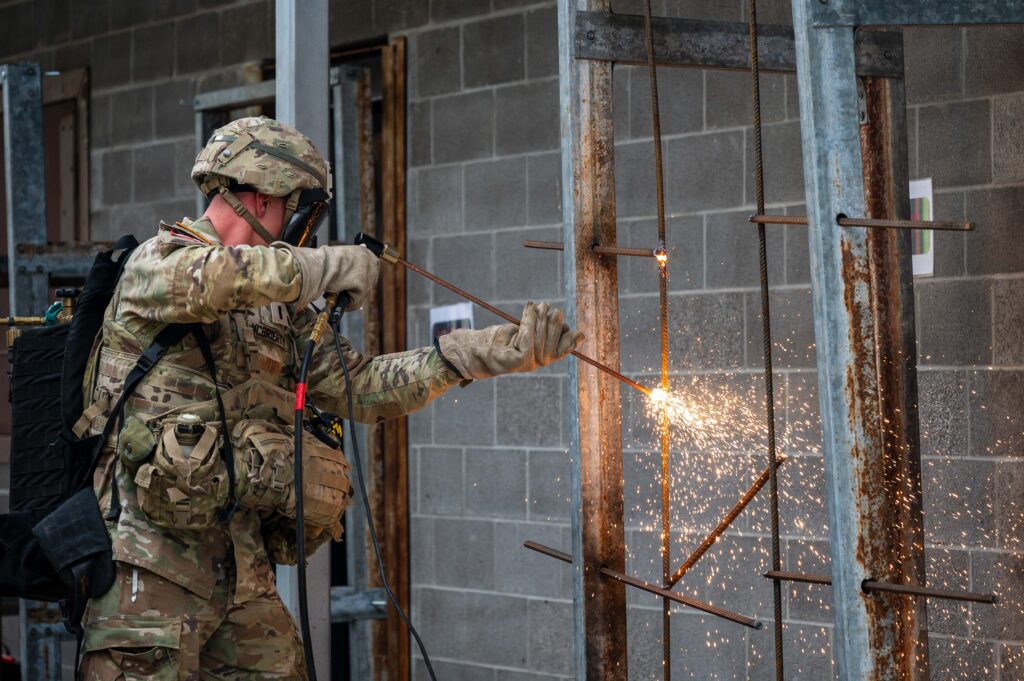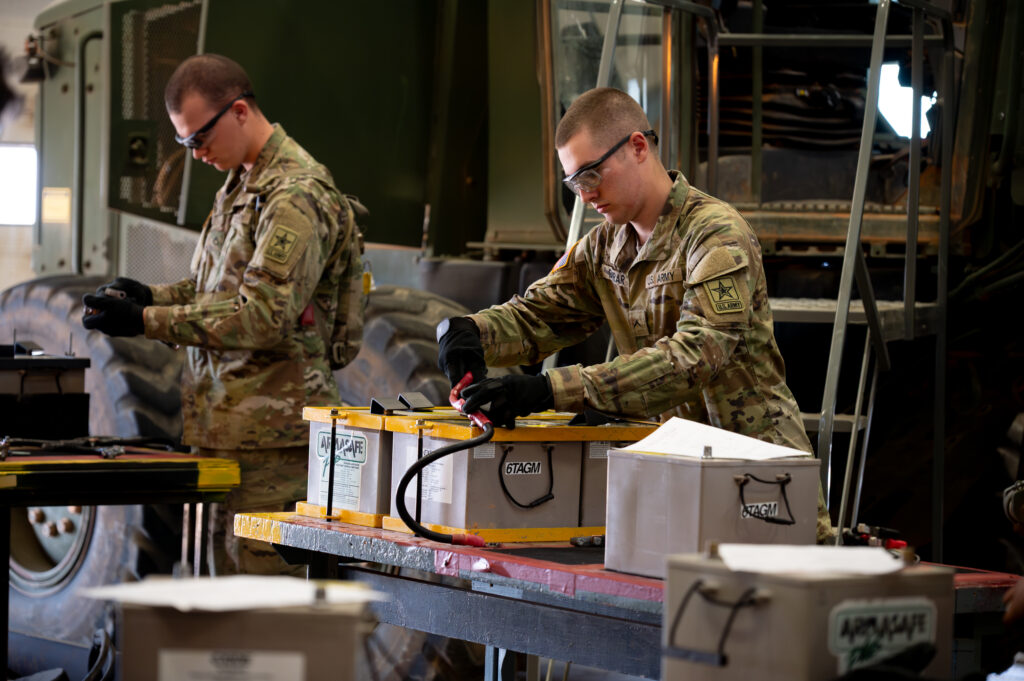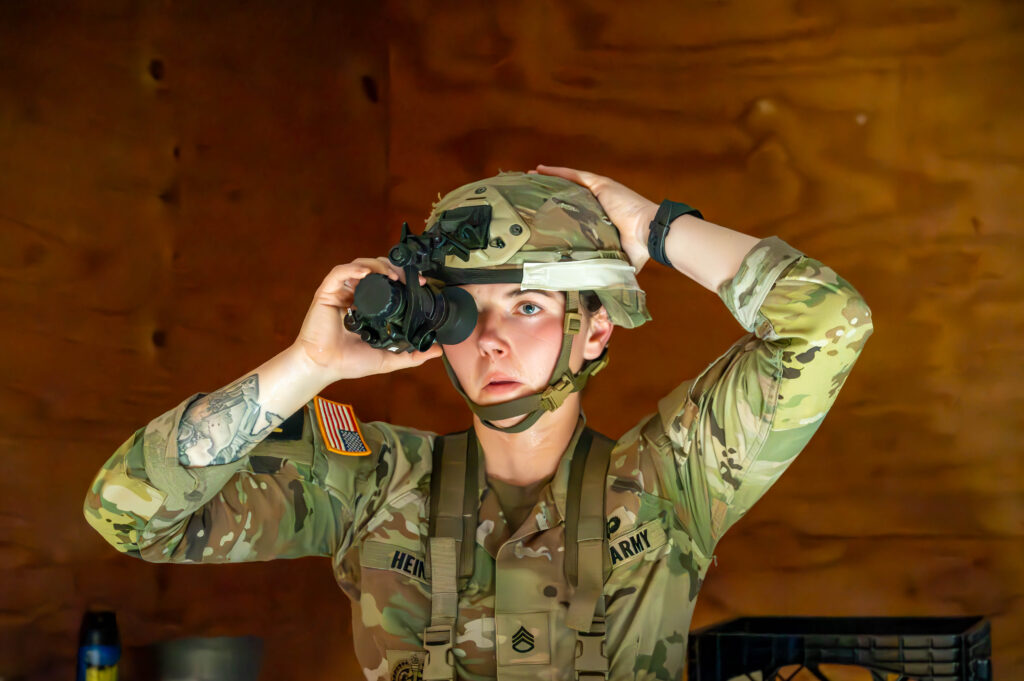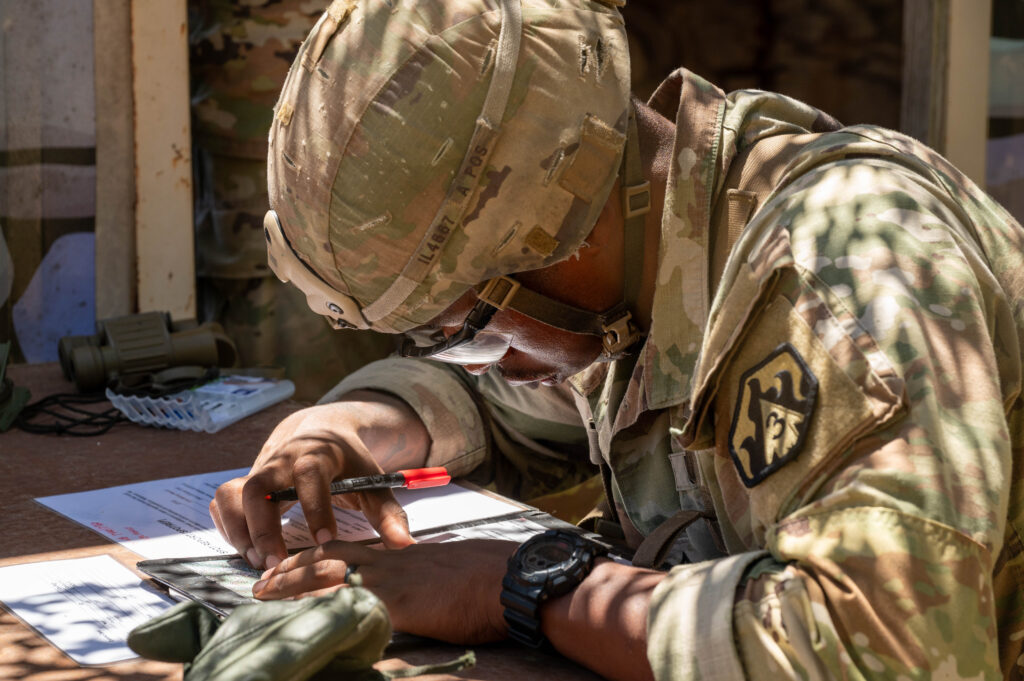Brian Hill
FORT LEONARD WOOD, Mo. (Oct. 7, 2020) — Visitors to the U.S. Army Engineer School’s command section might notice a new artwork hanging on the wall — a print of a painting that depicts Soldiers on a battlefield with a bazooka and the smoking ruins of a Soviet-built, North Korean tank in the distance.
The painting, completed this year by artist Larry Selman, was inspired by real events that took place in September 1950, just a few months into the Korean War. And a closer examination of the print reveals the signature of one of the Soldiers: Pfc. Leslie Burris, an Army Engineer who is now 90 years old and lives in Rolla, Missouri. He signed five prints, one of which was presented to USAES Commandant Brig. Gen. Mark Quander in August.
Dr. Shawn Howley, USAES deputy commandant, said it’s important to highlight and document the history of the Army Engineer Regiment at the school.
“We prominently display prints like this one in highly trafficked areas in order to maximize the number of students, Soldiers and visitors who will see our heritage,” he said.
Burris was in Yongsan, South Korea, assigned to the 2nd Combat Engineer Battalion — one of thousands of Soldiers defending the Pusan perimeter after the North Korean military invaded South Korea June 25, 1950, and advanced across much of the peninsula.
He was asked one day to take a bazooka he’d never fired before and destroy a tank. So, he and a fellow Soldier, Pvt. Robert Meyers, grabbed five rockets and took off in a jeep.
According to Troy Morgan, U.S. Army Engineer Museum director, the tank was a formidable target.
“The Soviet T-34 Tank was arguably the best mass-produced tank of World War II,” Morgan said. “Throughout the summer of 1950, the North Koreans had used T-34s to punch through U.S. and Allied lines.”
Morgan, who interviewed Burris about 10 years ago, said the chances of destroying a T-34 with a bazooka were low.
“The bazooka gunner had to hit the tank in the right spot, firing at the right angle to score a disable or a kill,” he said.
After completely missing with his first shot and having to take cover from return fire, Burris scored a direct hit with his next shot and disabled the tank — only to see a second T-34 behind it. Over several hours, Burris and Meyers would ultimately destroy three T-34s.
“This was truly a David-and-Goliath fight, and there were three Goliaths,” Morgan added.
Morgan said Burris’ actions that day are more heroic than the citation for the Bronze Star he received indicates.
“The first 15 days of September resulted in a higher casualty rate among U.S. Army units than any other 15-day period of the war,” he said. “Burris and Meyers were not trained bazooka gunners. In fact, when I interviewed Burris … he stated that he had seen a bazooka fired during training but had never handled one.”
Howley said the artwork is “a welcome part of our collection.”
“One of the Engineer Commandant’s roles is to act as the keeper of our engineer history and traditions, so this print will serve to continue educating our leaders and Soldiers and inform the public of our history,” he said.
According to Army historians, the Battle of Yongsan was a five-day engagement and one of several fought simultaneously while United Nations forces attempted to maintain a presence in the southeast corner of the Korean peninsula.
By Sept. 16, 1950, U.N. forces were able to break out of the Pusan perimeter, which marked the beginning of the second of 10 named campaigns of the Korean War: U.N. Offensive 1950.


-30-
About Fort Leonard Wood
Fort Leonard Wood is a thriving and prosperous installation that has evolved from a small basic training post more than 75 years ago to a premier Army Center of Excellence that trains more than 80,000 military and civilians each year.
Fort Leonard Wood is home to the U.S Army Maneuver Support Center of Excellence and three U.S. Army schools: the U.S. Army Engineer School; U.S. Army Chemical, Biological, Radiological and Nuclear School; and the U.S. Army Military Police School. In addition to training engineer, CBRN and military police specialties for the Army, Fort Leonard Wood also provides gender-integrated in-processing and Basic Combat Training for new Soldiers.
Fort Leonard Wood also hosts and trains with the largest Marine Corps Detachment and Air Force Squadron on any Army installation as well as a large Navy construction detachment.
More information about Fort Leonard Wood is at: https://home.army.mil/wood/index.php/about/mission
